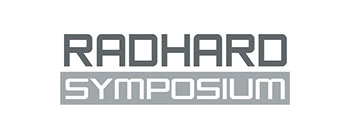Abstract

79Au Fever 2.0 - The search for heavy ions:
Swift, LET-rich and highly penetrating
Gerd Datzmann1, Ennio Capria2, Heikki Kettunen3, Rubén García Alía4
1 Datzmann interact & innovate GmbH, Germany
2 ESRF, France
3 University of Jyvaskyla, Finland
4 CERN, Switzerland
Abstract
Radiation hardness qualification procedures for electronic components and systems often require testing at facilities – providing highly energetic protons, heavy ions, neutrons and to some extent pulsed X-rays – emulating the radiation environment of the devices under test close to reality. These probing radiations are generated at particle accelerators or research reactors located almost exclusively at universities or publicly funded research institutions. Thus, users from industry as well as users from space agencies or academia are dependent on these organizations for providing them a fee-based service. An in-depth study has been performed focusing on the relationship between irradiation facilities and its industrial users. In the past 5 years, more than 50 expert interviews with European stakeholders from industry, space agencies and irradiation facilities, have been conducted for assessing the relevant factors and mechanisms that influence this relationship.
Recently, there are many signs all around the world that the availability of beam time, especially for testing with heavy ions and high energy protons, has decreased over the past years. The answers from the experts in the field show that a growing demand for testing versus a quasi-static offering from the facilities is perceived as one of the greatest challenges today and in the upcoming years. For exploring this more in detail, a dedicated survey with more than 10 users that regularly perform single event effect (SEE) testing at heavy ion facilities based in Europe has been conducted by the author. The aim of this study was to gain a better understanding of the root causes for this imbalance between offer and demand. The answer given by the experts in the field are divers and reveal a complex picture with a lot of technical driven issues and indirect mechanisms that lead to a growing demand. Furthermore, the fact that radiation hardness testing became a global marketplace has created and interdependence of beam time availabilities between North America and Europe. The mechanisms and root causes behind this availability bottleneck will be summarized and put into context from the perspective of the users.
In the case of heavy ion testing the growing usage of Commercial Of The Shelf (COTS) components has created a large impact on the testing procedures and on the choice of technical beam parameters. A significant number of COTS components require much higher penetration depths for SEE testing with heavy ions, even after intensive device preparation efforts. Removing packages, thinning of substrates and delidding of sample are often even not sufficient for performing standard qualification test with energies in the range of 10 – 20 MeV / nucleon. Not to mention the additional resource needed for time-consuming preparation steps as well as the associated risk to provide a sufficient number of devices that are fully operational in due time for the next test campaign. This is only one aspect out of a long list of reason why swift heavy ions with a large penetration depth provide an added value to commercial users.
This study tries to entangle on the one hand the demand for heavy ion testing in general, i.e. testing at the existing “low” energy facilities. On the other hand, the demand for high energy heavy ion testing with penetration depths that enable to characterize COTS components, 3D stacked devices as well as preforming board and box level testing. Answers from regular users of heavy ion facilities are presented that give insights on the evolution of the two types of demand in the past and in the future.
Radiation hardness assurance (RHA) with respect to single event effects of electronic devices foreseen for space application, are performed in a very limited number of facilities in Europe that offer professional beam time service on a regularly basis to external commercial customers. However, most of them are restricted in energy and therefore in penetration depth concerning heavy ions with sufficiently high LET-values as required in standards by space agencies like ESA and NASA. Only a few particle accelerators worldwide have the capability to provide heavy ions with energies fulfilling the “gold” standard in LET combined with millimeter ion ranges. Since these facilities have a dedicated focus for fundamental physics research their availability to commercial external users is by nature very limited or even excluded and in addition very expensive. In consequence many industrial users are in a “fever” for finding affordable SEE testing capabilities that supply them with a sufficient amount of heavy ions beam time. The European landscape of facilities with a particular focus on heavy ion facilities as of today will be depicted.
These challenges were one reason, why the European Union (EU) funded a network of 21 irradiation facilities in an infrastructure program called RADNEXT (RADiation facility Network for the EXploration of effects for indusTry and research). This 4-year project has been launched in June 2021 and aims – besides others – to tackle the aforementioned topics with a set of measures and initiatives. In general, RADNEXT has the goal to ease the access for external users and to harmonize the procedures. Via Transnational Access 6000 hours of beam time are awarded to users from academia and industry free of charge. Another work package deals with generating a roadmap and pre-design of future irradiation facilities. First results from the RADNEXT project running now for almost two years will be highlighted.
![[Translate to English:] [Translate to English:]](/fileadmin/uploads/intranet/events/radhard/2023/header-radhard2023.jpg)
